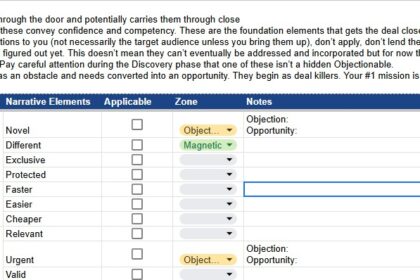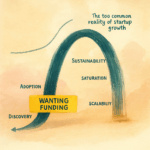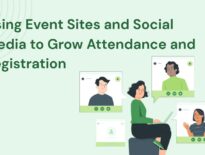
In business strategy and marketing, “Uniquely Better” is more than a slogan, it’s the distillation of why a venture deserves to exist. The term sits alongside other well-known ideas such as competitive advantage, differentiation, and “moat,” but with a crucial twist: it forces you to define why customers should choose you over all other options.
Marketing thought leaders have long underscored the need to articulate this. Harvard Business School’s Michael Porter, in Competitive Advantage, writes that strategy is about choosing to be different—and making trade-offs that others can’t or won’t make. Seth Godin, in Purple Cow, argues that being “remarkable” means standing out so distinctly that people talk about you. And as Warren Buffett famously explains in investor letters, a “moat” protects your business from competitors by making it harder for them to offer the same value.
The thread running through these perspectives is simple: businesses win when they can clearly define what makes them more compelling than alternatives and more meaningful to the people they aim to serve. But clarity isn’t automatic, especially for founders.
Article Highlights
The Curse of Knowledge
I’ve been talking with the Founders Best Friend team about ACES (Awareness, Consideration, Engagement, Sell) and a growth framework, and we started unpacking this idea of being Uniquely Better (and what makes it so). Think of this as an exercise to overcome what you should call The Curse of Knowledge. This bias occurs when you’re so familiar with your product, industry, or idea that you can no longer see it from the market’s perspective. You know too much, and that knowledge blinds you to what truly matters to the market.
Founders are particularly vulnerable here. They live inside their solution every day, assuming its importance and obviousness. But what feels magnetic to you may be irrelevant to a buyer, or worse, a turn-off. This forces you to externalize your thinking, break down your offer into components, and see it through the eyes of a prospective customer; I’m going to explore it a bit with you now but they run a workshop here where you should just jump in and get it right.
Working Through Being “Uniquely Better”
Imagine a template, the screenshot here, designed to make this process structured and repeatable. It’s built on three key parts:
- Narrative Categories – broad considerations to explore, such as uniqueness, value, credibility, or experience. These are the thematic “buckets” for your differentiation.
- Narrative Elements – specific contexts within each category that sharpen the conversation. For example, under “Unique,” you might assess whether your offer is novel, exclusive, or protected.
- Zone Key – a scoring system that forces a decision: is this element Magnetic, Strong, Weak, or Objectionable?
By moving systematically through the grid, you avoid vague claims (“We’re the best at X”) and instead build a taxonomy of what actually moves customers. By the way, this screenshot isn’t the entire template, grab one with the team here.

The Categories and Elements
From the template, each Narrative Category contains several Elements to evaluate. For example:
- Unique
- Novel: Is this new in concept or application?
- Different: Does it stand apart clearly from existing solutions?
- Exclusive: Is it available only from you?
- Protected: Is it shielded by IP, regulation, or other barriers?
- Value
- Better Outcome: Does it deliver a meaningfully better result?
- Cost Advantage: Is it more affordable or cost-effective?
- Faster: Does it save time compared to alternatives?
- Credibility
- Proven Results: Is there verifiable success?
- Recognized Authority: Do you or your team have recognized expertise?
- Endorsements: Are others publicly supporting it?
- Experience
- Ease of Use: Is it intuitive?
- Support: Do customers get better service?
- Emotional Connection: Does it inspire loyalty or attachment?
These categories and elements form your exploration map. The goal isn’t to check every box, it’s to see which boxes truly matter to your audience and how each lands in the Zone Key (Magnetic, Strong, Weak, or Objectionable).
How to Work Through How You’re Uniquely Better
A founder might classify Elements into Zones this way:
- Unique -> Novel
A founder might believe their product is novel because no one in their city offers it. In customer discovery, they learn that while the location is unique, similar products are available online. That might shift this from Magnetic (“completely new”) to Strong (“local convenience” is a solid benefit, but not the core attraction). - Value -> Cost Advantage
If pricing is significantly lower than competitors and prospects lead with cost in conversations, this is likely Magnetic. But if price only comes up after a prospect already wants the product, it’s probably Strong. - Credibility -> Endorsements
Having one well-known customer might feel like a big win, but if that customer isn’t relevant to your target audience, it’s Weak (meaning it won’t help close deals unless reframed). - Experience -> Emotional Connection
If customers light up when they talk about your brand or story, that’s Magnetic. If they respect you but don’t have an emotional tie, it’s Strong. If they say “meh” or show indifference, it’s Weak or possibly Objectionable if they actively dislike the experience.
Classify Your Story with the Zone Key
The Zone Key is where emotional reality meets strategic rigor:
Magnetic – These are the hooks that get prospects in the door and can carry them through to close. They typically spark an emotional response (“I want that”) before the rational mind catches up. Lead with these in your outreach and marketing.
Strong – These convey competence and reliability. They aren’t as flashy as Magnetic elements, but they are the rational foundation that helps customers justify their decision. Strong elements close the deal by reducing risk in the buyer’s mind.
Weak – These don’t currently help you win the deal and might even distract from your core message. They could be irrelevant to your target audience, unproven, or undeveloped. Weak elements aren’t fatal, but they should be sidelined until they can be improved. Watch them carefully in case they hide an objection.
Objectionable – These start as deal-killers. They may be perceived as too expensive, too complex, too slow, or otherwise unappealing. Your mission is to convert them into opportunities; often by reframing, redesigning, or pairing them with a Magnetic element that offsets the concern.
We make decisions emotionally and justify them rationally. The Magnetic elements in your narrative spark the emotional “yes.” The Strong elements back that up with rational proof. Weak elements must be managed so they don’t derail momentum, and Objectionables need proactive conversion before they become fatal.
By mapping your offer in this way, you not only clarify your “Uniquely Better” story, you also equip yourself with a playbook for sales, marketing, and even product development (remember, I’m an ass that marketing supersedes product so if you disagree with me, just ignore that last point and keep it to yourself). This framework becomes a decision-making tool: every investment, feature, or campaign should strengthen a Magnetic or Strong element, or turn an Objectionable into a win.
If you’re a founder, the exercise forces you to answer your own toughest questions: Why is this better? Which aspects get people excited? Which ones will they use to justify their choice? Which might make them walk away? In doing so, you not only overcome The Curse of Knowledge, you replace it with a structured, reality-tested story that can win hearts and minds.




Well said Paul O’Brien! The part about buying emotionally and justifying rationally isn’t well understood. There’s this idea that business is all about the “cold hard facts” and that’s just not true at all. People want to feel good about buying your offering, not just for it to make sense in their head. The question you could ask is “Are my clients running around telling their friends and family when they buy your product?”.
Daniel Perumal and that’s why the Zones in your Uniquely Better framework are so useful. Magnetic isn’t just “different,” it’s what gets people talking about it at dinner with friends before they’ve even finished the transaction. The Strong elements are what keep them confident in that decision afterward. The cold, hard facts matter, but they rarely light the spark. What you built forces founders to see both sides of that equation instead of hiding behind just the rational half.
Compelling has three definitions that all matter when we are talking about this: demands attention, motivated to action, obligated to do.
What is objectionable needs to be converted into opportunity. Think about how 5-hour Energy converted the narrative around the taste of their product to their advantage.
What’s weak about an offering translates to apathy and what people ignore about it. As long as their are enough elements that are magnetic and strong about the offering and that the objections have been handled, then what is weak may be ignored. If the offering is being ignored or passed over, then look to what is weak in your narrative structure to find creative opportunities to drive awareness and convert those elements to your advantage.
Nicholas Alter If Magnetic and Strong can carry an offering despite Weak elements, and Objectionables can be flipped into opportunities, then here’s the question (cc Daniel):
What’s the tipping point where too much “weak” stops being ignorable and starts eroding the Magnetic entirely; and how do you recognize you’ve crossed it before the market tells you?
This framework sounds like a game changer. Curious, do most founders realize their ‘magnetic’ elements only after testing them in market?
Yomumacc, Daniel?
Thanks for sharing, Paul